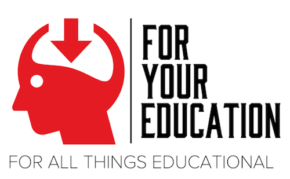COMMOM CORE CURRICULUM (part 2)
The goal of Core Curriculum is to make sure that students are literally prepared for college and careers. There are five key components to the standard for English and Language Arts: Reading, Writing, Speaking and Listening, Language, and Media and Technology.
The goal of the mathematics standards is to achieve greater focus and coherence in the curriculum.
There are many benefits of core curriculum. If you break down the area of English Language Language Arts and Literacy into its sub-categories:
Reading:
As students advance through their grade levels, the complexity of what they are expected to read becomes more complex, with a greater progression of development of reading comprehension. This is to assure that the children are gaining more out of what they read.
There is no set of reading material to abide by. Rather, students are encouraged to read a variety of c;as sic and contemporary literature, as well as, challenge going informational texts from an array of subjects. This is to encourage students to gain a new knowledge and insight, and begin to consider a variety of perspectives as they read.
There is some critical content for all of the students—classic myths and stories from around the world, important U.S. Documents, seminal works of American literature, and writings by William Shakespeare. The rest, however,is left up to the individual states and districts.
Writing:
Students are encourages to write in forms of logical arguments based on solid reasoning, and relevant evidence. The student is also encouraged to include their own opinions to foster critical thinking skills.
Students are encouraged to write short, focused research projects, similar to the kind they will face in their careers, as well as long-term, in-depth research papers. This is because these type of papers are important for college readiness skills.
The standard also includes annotated samples of student writing to help them determine the performance levels in writing arguments, explanatory texts, and narratives.
Speaking and Listening:
Students gain, evaluate, and present complex information, ideas and evidence through listening and speaking. Therefore, it is a component that is necessary in the curriculum. Emphasis is placed on discussions in one-on-one, small groups, and whole-class settings during formal, as well as, informal settings.
Language:
Vocabulary instruction basically takes place through a mixture of conversations, direct instruction, and reading.
The standards expect students to use formal English in their writing and speaking, but do recognize that colleges and careers today express themselves in a variety of contexts.
Media and Technology:
The standard included instruction in keyboarding is available, but do not mandate the teaching of cursive handwriting.
The standards mandate that eight principles of mathematical practice be taught:
- Make sense of problems and persevere rebounds in solving them.
- Reason abstractly and quantitatively.
- Construct viable arguments and critique the reasoning of others.
- Model with mathematics.
- Use appropriate tools strategically.
- Attend to precision.
- Look for and make use of structure.
- Look for and express regularity in repeated reasoning.
The Common Core has been found to be the most effective standards from states across the United States and countries around the world. The standards give a well defined structure as to what students need to gain through their K-12 education in order to graduate high school prepared to succeed in entry-level careers, introductory academic college courses, and workforce training programs.





I believe that the foundation of any core corriculum should start with learning WHO we believe ourselves to be. What and how we do everything stems from this belief.